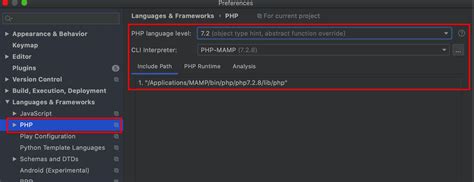您所在的位置:首页 - 科普 - 正文科普
idea设置
![]() 乙绽
2024-05-03
【科普】
648人已围观
乙绽
2024-05-03
【科普】
648人已围观
摘要**Title:SettingUpYourIDEforProgrammingSuccess**SettingupyourIntegratedDevelopmentEnvironment(IDE)isc
Title: Setting Up Your IDE for Programming Success

Setting up your Integrated Development Environment (IDE) is crucial for programming success. Whether you're a seasoned developer or just starting out, configuring your IDE properly can significantly enhance your productivity and coding experience. Below, I'll guide you through the essential steps to set up your IDE effectively.
Choose the Right IDE
The first step is selecting an IDE that suits your programming needs. Popular IDEs like Visual Studio Code, IntelliJ IDEA, Eclipse, and PyCharm offer robust features and extensive support for various programming languages. Consider factors such as language support, community plugins, and ease of use before making your choice.
Installation and Setup
Once you've chosen your IDE, follow these steps to set it up:
1.
Download and Install:
Visit the official website of your chosen IDE and download the installer for your operating system. Run the installer and follow the onscreen instructions to complete the installation process.2.
Configure Settings:
Upon launching the IDE for the first time, take some time to configure settings according to your preferences. This includes theme selection, font size, indentation settings, and key bindings. Customizing these settings can make your coding environment more comfortable and efficient.3.
Install Plugins and Extensions:
Most modern IDEs support plugins or extensions that enhance functionality for specific languages or frameworks. Explore the available plugins/extensions marketplace within your IDE and install those relevant to your workflow. Common plugins include linters, version control integrations, debugger extensions, and code snippet libraries.4.
Set Up Version Control:
If you're working on projects collaboratively or want to keep track of changes to your codebase, integrating version control is essential. IDEs often have builtin support for version control systems like Git. Configure your IDE to connect to your preferred version control repository (e.g., GitHub, Bitbucket) and learn how to perform common version control operations directly from within the IDE.5.
Configure Build Tools:
Depending on your project requirements, you may need to configure build tools such as Maven, Gradle, or npm. IDEs typically provide integration with these build tools, allowing you to execute build tasks, run tests, and manage dependencies seamlessly. Set up your preferred build tool within the IDE and ensure it aligns with your project's structure and requirements.6.
Enable Code Assistance Features:
Modern IDEs offer powerful code assistance features such as code completion, syntax highlighting, and error detection. Ensure that these features are enabled and configured optimally for the programming languages you work with. Adjust settings related to code ***ysis, autoimports, and code formatting to match your coding style and preferences.Best Practices for IDE Usage
To make the most out of your IDE setup, consider adopting the following best practices:
1.
Regular Updates:
Keep your IDE and installed plugins/extensions up to date to benefit from the latest features, performance improvements, and security patches.2.
Keyboard Shortcuts:
Learn and utilize keyboard shortcuts for common tasks to speed up your coding workflow. IDEs often provide customizable key bindings, allowing you to tailor shortcuts to your liking.3.
Project Organization:
Maintain a wellstructured project layout within your IDE to facilitate navigation and code readability. Group related files into directories, utilize package management features, and refactor code as necessary to keep your project organized.4.
Use Integrated Tools:
Take advantage of integrated tools such as debugging consoles, terminal emulators, and database explorers to streamline development tasks without switching between different applications.5.
Backup Configuration:
Export and backup your IDE configuration settings regularly to ensure you can quickly restore your preferred setup in case of system changes or IDE reinstallation.Conclusion
Setting up your IDE for programming success involves choosing the right IDE, configuring settings, installing plugins, and adopting best practices for usage. By investing time in setting up your IDE effectively, you can create a productive and personalized coding environment that enhances your efficiency and enjoyment of programming. Embrace continuous learning and exploration to discover new features and optimizations that further improve your development experience. Happy coding!
This HTML document provides a comprehensive guide to setting up an Integrated Development Environment (IDE) for programming success. It covers essential steps such as choosing the right IDE, installation, configuration, plugin installation, version control integration, and best practices for IDE usage. Whether you're a beginner or an experienced developer, following these guidelines can help optimize your coding environment and enhance your productivity.
Tags: idea怎么编程 idea2021设置 idea怎么编辑配置 idea2020设置
版权声明: 免责声明:本网站部分内容由用户自行上传,若侵犯了您的权益,请联系我们处理,谢谢!联系QQ:2760375052
上一篇: 重庆学编程的机构
下一篇: 新能源存储与转化是什么
最近发表
- 探索日本核污染水排放,现状、影响与应对策略
- 全职妈妈离婚获2万元经济补偿,揭秘背后的真相与启示
- 王琳惊艳亮相,54岁穿短裙婚纱走秀的优雅与活力
- 继续深耕中国,共创共享机遇
- 千位歌迷在刀郎演唱会现场外,音乐盛宴如梦如幻
- 渔船遇海盗袭击,3名中国人失踪,紧急救援与深入理解
- 小米试驾体验遇尴尬,雷军秒道歉引热议
- 香港歌手李国祥去世
- 音乐人因刀郎跨越西洋乐与中国音乐的奇妙转变——深度解读与启示
- 清华毕业生失踪背后的罗生门,揭开真相与寻找答案
- 韩国救山火消防员盒饭,一份充满人间温情的瞬间
- 黄金价格的终极目标,探寻价值与投资方向
- 小区惊魂,儿童车祸事故的警示与启示
- 湖南38个机关事业单位围墙全拆,开启新篇章
- 车主掉头遇红灯,后车滴滴巧应对
- 探索云南曲靖市会泽县的地震事件
- 新郎没拉裤子拉链,新娘手动闭链的浪漫婚礼
- 10岁女孩高烧去世,被诊断为7种疾病
- 拥抱与冒险,两个小孩的温馨瞬间与泥坑的奇妙旅程
- 女厅官落马后,下属被查风波掀起波澜
- 勇敢逆行,诠释人间大爱——关于溺亡外卖员及其家庭的故事
- 大摩小摩去年四季度疯狂买A股
- 从人去楼空歌词中读懂离别的深情与生命的哲思
- 甲亢患者学功夫之路,挑战与成长
- 九牛一毛歇后语——生活中的小智慧大道理
- 多名大陆配偶被限期离台 台各界发声
- 和巧虎一起玩躲猫猫,让孩子在游戏中学习与成长!
- 王者荣耀游戏体验优化与应对关键问题的应对策略
- 探索趣味与成长的数字乐园
- 地震的力量,缅甸与汶川地震的对比
- 畅享军事模拟游戏的无限乐趣
- 缅甸地震,灾难中的救援与应对
- 董宇辉报平安,温馨时刻
- 机战王洛洛历险记全集——一场童年的奇幻冒险之旅
- 揭开美军飞行员之怒,深入了解行为后果与安全责任
- 揭开全国重名查询系统的神秘面纱,如何轻松找到与你同名的人
- 缅甸地震中的救援行动与启示
- 揭秘你的另一个星座,探索隐藏的性格密码
- 东旭集团证券违法拟被罚17亿元
- 深入解析暗黑破坏神攻略,助你成为圣休亚瑞的传奇英雄
- 专家解读地球是否进入活跃期文章标题
- 畅玩经典——实况足球10中文版的全面解析与攻略
- 牛肉市场中的中方与美国厂商,续约与挑战
- 畅玩捕鱼达人单机版,轻松体验水下冒险的乐趣
- 王钰栋应对脚踝受伤,回应与处理
- 探索自然的灯塔——野外女教师的角色与魅力
- 华阳集团,2024年净利润增长引领行业新篇章
- 探索南美大陆的地理瑰宝
- 男子做马拉松陪跑一场收入6000元
- 69岁阿姨的退休生活,自驾游的传奇之旅文章标题及内容


